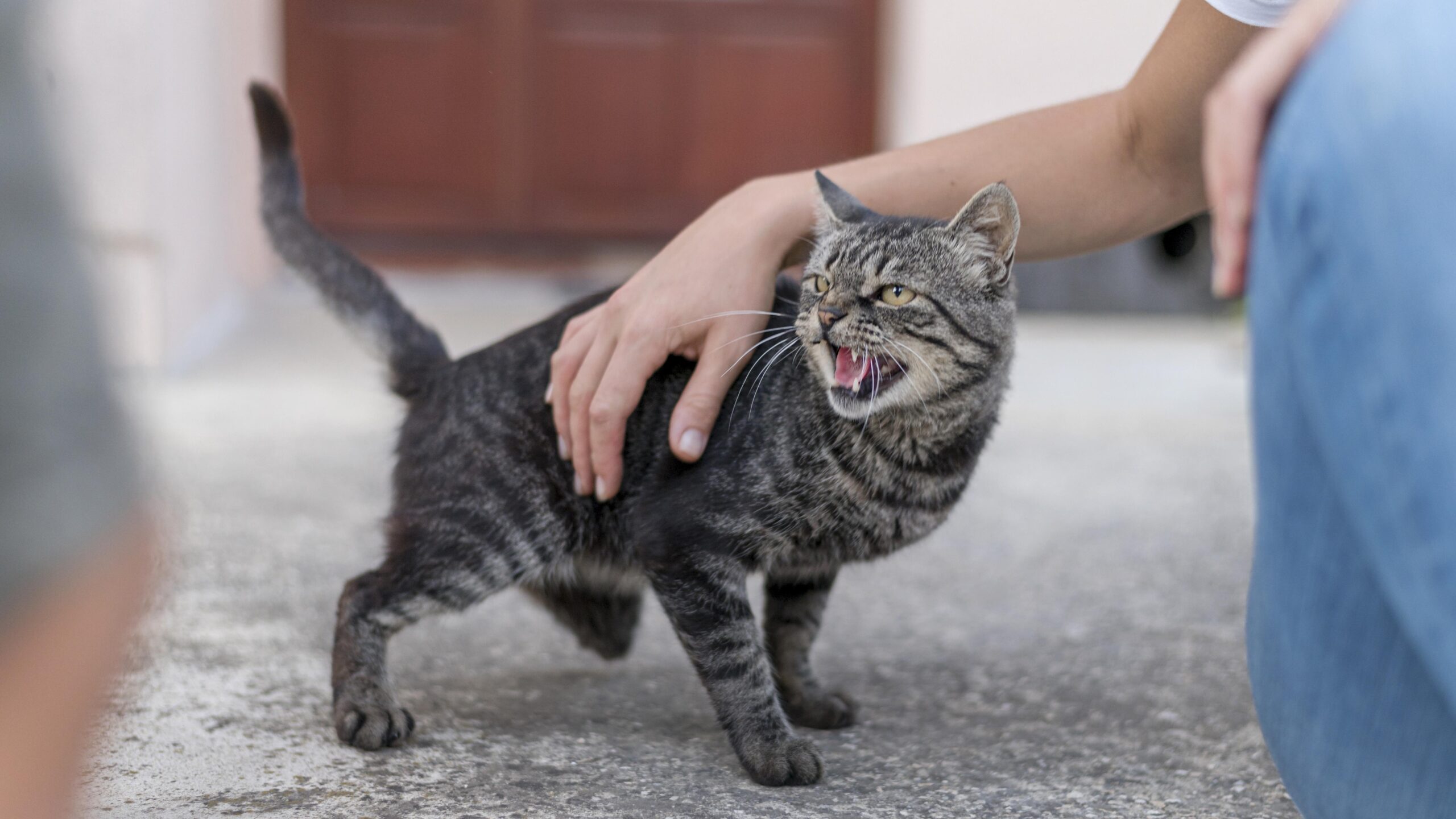Is your cat afraid of strangers? If so, you may notice signs of anxiety when strangers come knocking — think pacing, hiding, decreased appetite, trembling, excessive lip licking or general restlessness.
Between three to nine weeks of age, cats undergo a socialisation period during which they learn how to relate to other cats or humans. If your cat was not exposed to visitors early on in their nine lives, they may struggle with stranger anxiety now.
The arrival of visitors also often means disruptions to their routine, from loud noises, such as doorbells, laughing or talking, to unfamiliar objects, such as gifts or packages.
It could also be innate — perhaps your cat simply has a more timid or loner temperament, which makes her apprehensive towards strangers.
The good news is, there are ways to help her stay calm in the presence of new humans in the house.
How to make your cat more comfortable around new people
If this is not your cat’s usual behaviour, consider having them checked by a vet to rule out any physical causes. Otherwise, let’s get (your cat) acquainted.
Our four-legged friends are infamously territorial and they need their space. If you know you have visitors coming, first set out to establish a safe area for your cat with food, water and a litter box.
It should be located in a secluded and relatively familiar location, where sounds will be muffled and your cat can comfortably choose to stay away from your guests. The idea is to prevent them from feeling trapped, but instead be able to relax knowing they have a space of their own to retreat to. That said, you don’t want to force them to be in there — this may result in them recognising the spot to be unpleasant.
When your guests are arriving, allow them to move to the safe spot if they choose. Once they are there, use interactive toys and treats to distract them so they associate the presence of other humans with positive experiences.
Feliway diffusers will also be useful in this situation to put your cat at ease, as they emulate pheromones with a calming effect.
How to condition your cat to stay calm around strangers over time
Once you are over the initial hump, you will want to take your exercises further to help your cat remember that it is safe to be around strangers (contrary to our childhood beliefs!). Enlist the help of a friend who can play the role of a visitor over multiple sessions and practice these next steps:
Social distancing
Not unlike the SOP we adhere to these days, your cat will appreciate the safe distancing put in place when being introduced to a new human. Try this in a spacious room, and allow your cat to be near you.
The visitor should enter the room slowly, at a distance as far away from the cat as possible. If the distance is sufficient in the eyes of your cat, they are unlikely to present anxiety, arousal or aggression toward the stranger.
Do note that this distance may be different for every cat, also taking into account how familiar they are with the visitor. Approach this exercise with a trial-and-error mindset to find the sweet spot for your cat.
Reward and repeat
When you nail a distance from which your cat no longer seems fearful and is able to display calm behaviour, reward them with treats or affection. You will want to end the session here on a positive note.
To help your cat gradually become more comfortable, the key is to repeat this exercise. At the next session, begin at the safe distance you have identified for your cat in the previous round.
We recommend doing this with the same visitor, so that your cat can progress smoothly. But if this is another willing friend, start again from the top at the furthest distance and work your way down.
Close the gap
When your cat appears more accustomed to these sessions, you can proceed to decrease the distance between them and the visitor. This may be tricky to pull off, so take it slow.
Move your cat’s food bowl or use treats or toys to lure them closer to the person. You can also ask your friend to move close to the cat, making sure the person does so without sudden movements.
Throughout this process, watch your cat’s behaviour for red flags that indicate anxiety. If there are any, take a step back and start again at a comfortable distance. If they are able to remain calm, gradually close the gap, spreading out the increments over several sessions.
Moving on
If you make it to this stage, give yourself a pat on the back! You’ve done well and your cat should now be comfortable eating or even playing near a visitor. This is when you can add motion or multiple people to the mix.
To introduce the element of movement, you should first distract your cat with toys or treats, or start at a safe distance. Then, ask your visitor to go about steady yet noticeable movements, such as pacing back and forth or getting up from a seated position.
The end game here is to practice repeatedly, until you successfully desensitise your cat to the presence of a new person.
Keep your humans in check
Helping your cat generalise calm behaviour towards strangers will also require effort on the part of the human. Before arrival, give your visitors a heads up that you have an anxious cat so that they can help by maintaining a quieter energy.
Excited cat-loving friends may feel the urge to say hello or even pick up your cat — it’s up to you paw-rents to set boundaries that will help your cat feel safe.
Not fur-getting…
Keep in mind that every cat has its own character, and some may never come to a certain level of comfort with strangers. Progress will take time, but if it plateaus at some point, it may be your cat’s way of telling you their limits. Respect that and help your cat manage with what is acceptable to them.
You should also refrain from using any forms of punishment such as withholding food or spraying water. Cats do not respond to negative reinforcement and it may worsen the situation. If you need to, see a veterinary behaviourist who can help you and your cat get used to these meet-and-greet occasions.













